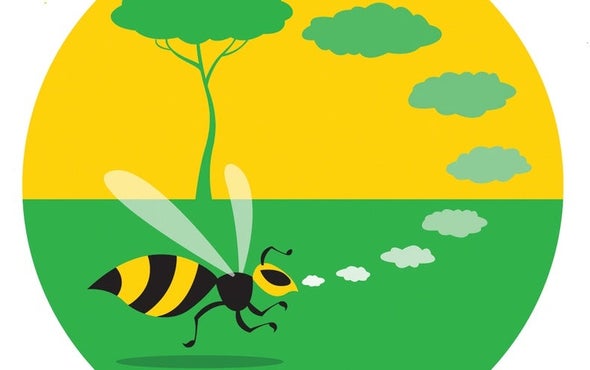A hornet senses a chemical distress signal from an agarwood tree and zips over, hoping to devour a customary meal of attacking caterpillars. But when it arrives, there are no caterpillars, and it has to settle for agarwood seeds—which the duped insect carries away, unwittingly helping the tree reproduce. A new study in Current Biology says this is the first-known case of a plant deploying such defensive chemicals to spread its seeds.
The agarwood species Aquilaria sinensis is native to tropical China. When caterpillars start eating its leaves, the leaves respond with a type of defense found in many plants: they release compounds called herbivore-induced plant volatiles, or HIPVs, to attract hungry predators. “Most plants have these [HIPVs],” says Jessamyn Manson, an ecologist at the University of Virginia, who was not involved with the new research.
In the study, researchers used chemical analyses and field experiments to demonstrate that agarwood fruit can also produce compounds found in HIPVs—even in the absence of a caterpillar assault. This quickly draws various types of hornets, which feed on fleshy, nutrient-rich blobs called elaiosomes attached to the seeds. The hornets tend to discard the seeds near their nests—shaded areas where they can germinate without drying out. In direct sunlight, the seeds die within hours.
The study illuminates an infrequently studied phenomenon. “Rapid seed dispersal is overlooked,” says study co-author Gang Wang, an ecologist at Xishuangbanna Tropical Botanical Garden of the Chinese Academy of Sciences. Seed dispersal by hornets is particularly mysterious. Although ants—hornets' relatives—are estimated to spread seeds for more than 11,000 plants, the study notes, documented cases of hornets themselves doing so are rare.
These results have conservation implications, too, for a region where local people eat hornet larvae and use agarwood— which is threatened by habitat loss—for traditional medicine practices. “Conservation of agarwood trees has to link with the conservation of hornets,” Wang says. Manson agrees. “We can't just protect a plant and hope for the best,” she says. “We need to understand its biological community.”

